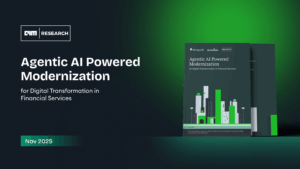As Artificial Intelligence (AI) continues to disrupt industries and transform business operations, organizations are grappling with the challenge of realizing tangible returns on their AI investments. While the potential benefits of AI are well-documented, the path to achieving a positive return on investment (ROI) is often fraught with complexities and unique considerations.
The Unique Nature of AI ROI
Measuring the ROI of AI implementations is fundamentally different from traditional technology investments. Unlike off-the-shelf software or hardware solutions, AI systems require continuous learning, adaptation, and optimization to deliver sustained value. The dynamic nature of AI means that the ROI calculation must account for ongoing costs associated with data acquisition, model training, and system maintenance.
Moreover, the benefits of AI are often indirect and difficult to quantify, such as improved decision-making, enhanced customer experiences, or increased operational efficiency. As a result, traditional ROI metrics may fail to capture the full impact of AI on an organization’s bottom line. According to the 2024 PwC Global CEO Survey, 70% of business leaders believe that generative AI will significantly change how their businesses create, deliver, and capture value. Furthermore, there is a strong consensus on the importance of establishing an early generative AI strategy to proactively address an accelerating existential crisis.
Best Practices for Maximizing AI ROI
To navigate these challenges and unlock the true potential of AI investments, industry experts recommend adopting a comprehensive approach that spans strategy, implementation, and continuous improvement.
Align AI Initiatives with Business Objectives: One of the critical best practices emphasized by experts is the need to align AI initiatives with clearly defined business objectives. By identifying specific pain points or opportunities for optimization, organizations can prioritize AI use cases that deliver measurable and tangible value. This strategic alignment ensures that AI investments are focused on driving real business impact rather than being treated as isolated technology experiments.
Establish a Robust Data Strategy: AI systems are only as powerful as the data they are trained on. Experts stress the importance of establishing a robust data strategy that ensures the availability of high-quality, diverse, and relevant data. This may involve investing in data governance frameworks, data acquisition processes, and data preprocessing techniques to ensure the integrity and usability of the data feeding AI models.
Throughput: The volume of information a gen AI system can handle in a specific period of time. Calculating this metric involves understanding the processing speed of the model, efficiency at scale, parallelization, and optimized resource utilization.
Foster Cross-Functional Collaboration: Successful AI implementations require cross-functional collaboration between business stakeholders, data scientists, and IT professionals. Experts recommend fostering an environment where domain expertise, technical skills, and business acumen converge to drive AI initiatives. This collaborative approach not only ensures alignment but also facilitates knowledge transfer and promotes a culture of continuous learning and improvement.
Embrace Agile and Iterative Development: AI is an iterative process, and experts advise organizations to embrace agile development methodologies. By adopting a fail-fast approach and continuously refining AI models based on real-world feedback, organizations can accelerate time-to-value and optimize their AI investments over time.
Invest in Talent and Upskilling: The success of AI initiatives hinges on the availability of skilled talent. Experts recommend investing in talent acquisition, training, and upskilling programs to build a workforce capable of leveraging AI technologies effectively. This may involve partnerships with academic institutions, hiring specialized AI professionals, or providing ongoing training opportunities for existing employees.
To fully understand the exact business value of a gen AI model, Its needed to examine metrics in segments throughout the lifecycle of a model, from pre-model to continuous optimization.
Model quality
Tracking model quality KPIs from the development phase throughout their operational lifespan is not merely about upholding quality. It’s a proactive pathway of continuous enhancement and breakthrough innovation. By prioritizing the model quality, you gain invaluable insight into how the model performs in the wild, as opposed to just on training data, while mitigating hallucinations.
It’s also important to evaluate the advantages and disadvantages of models at multiple levels based on context, references, and sampling. However, you should use a wide range of diverse data, irrespective of the framework.
Monitoring key indicators before and after launch essentially takes the model’s pulse to ensure it’s delivering on its promise. As feedback is generated, it can be fed back into the model to further enhance future outputs. This cycle can be repeated again and again, creating a virtuous cycle of model improvements. At the same time, errors that go unnoticed can be reinforcing over time. Getting things right early and often is, therefore, crucial.
Here few metrics I recommend for tracking model quality:
- Quality index: An analysis of multiple metrics aggregated into a single value to represent overall model performance.
- Error rate: The percentage of responses provided by the model, which are incorrect or invalid. Human evaluation helps define and generate this metric.
- Latency: The time delay between when a query is submitted to the model and when it returns the response. This includes the parallel processing capabilities of the model, model architecture, deployment infrastructure and availability.
- Accuracy range: The baseline expectation for precision accuracy thresholds for the model to meet. For this metric, it is often helpful to establish a squad to analyze and challenge your model.
- Safety Score: The number of harmful categories and topics that may be considered sensitive for the business.
Industry Perspectives on AI ROI
As the adoption of AI accelerates, several leading consulting firms and research organizations have shared their perspectives on measuring and maximizing the ROI of AI implementations. If AI capabilities are customer-facing, usage metrics can reveal if people find them valuable and how often they are utilized. By isolating these metrics, organizations can gain clear insights on the user experience, which could otherwise get lost in the model optimization cycle. It shifts the focus from nitty-gritty technical details to a bird’s-eye view of the model’s accessibility, reliability, and usability.
Below are the metrics recommended for tracking business impact:
- Adoption rate: The percentage of active users over the lifetime of a campaign or project divided by the total intended audience.
- Frequency of use: The number of times queries are sent per user on a daily, weekly, or monthly basis.
- Session length: The average duration of continuous interactions.
- Queries per session: The number of queries users submit per session.
- Query length: The average number of words or characters per query.
- Abandonment rate: The percentage of sessions ended before users find answers.
- User satisfaction: Surveys assessing user experience or other customer satisfaction metrics, such as Net Promoter Score (NPS).
McKinsey & Company
In a recent report, McKinsey & Company highlighted the potential for AI to unlock significant economic value across various industries. The firm estimates that AI could contribute up to $13 trillion to the global economy by 2030. However, McKinsey emphasizes the importance of developing a clear AI strategy, fostering a data-driven culture, and addressing ethical and regulatory considerations to realize the full potential of AI investments.
Deloitte
According to Deloitte’s research, achieving high ROI from AI implementations across industries, requires a strong foundation in data management, tracking results, and addressing security, privacy, and ethical concerns. Companies that have largely or fully implemented these key practices tend to see higher returns on their AI investments. Deloitte emphasizes the importance of moving beyond efficiency gains to using AI for strategic differentiation, such as developing new products and services, which necessitates proving business value. Scaling successful AI experiments quickly across the organization is critical to justify large investments and realize ROI, leveraging cloud platforms where possible.
Gartner
Gartner, a leading research and advisory firm, has provided guidance on measuring the ROI of AI investments. The firm recommends incorporating both quantitative and qualitative metrics, such as cost savings, revenue growth, customer satisfaction, and operational efficiency improvements. Gartner also emphasizes the need for organizations to develop a clear AI strategy aligned with their overall business objectives.
While the upfront costs of AI implementations can be substantial, the potential value unlocked by AI across industries is significant. As organizations navigate the AI journey, it is crucial to strike a balance between short-term costs and long-term value creation.
In industries such as healthcare, AI has the potential to revolutionize patient care, drug discovery, and disease prevention, potentially leading to substantial cost savings and improved outcomes. In the financial sector, AI can enhance risk management, fraud detection, and personalized financial services, driving revenue growth and customer retention.
Manufacturing and logistics companies are leveraging AI to optimize supply chains, predictive maintenance, and production processes, resulting in increased efficiency, reduced downtime, and cost savings.
Across industries, the value proposition of AI lies in its ability to augment human intelligence, automate repetitive tasks, and uncover insights from vast amounts of data. As organizations embrace best practices and overcome implementation challenges, the cost-value equation of AI investments is poised to shift in favor of substantial long-term returns.
In conclusion, unleashing the business ROI of AI implementations requires a strategic and holistic approach that aligns technology with business objectives, fosters collaboration, and prioritizes continuous improvement. Establishing KPIs early is a pivotal step, especially as projects iterate and evolve. Each opportunity to refine AI processes for efficiency can compound over time, offering a continuous feedback loop. Additionally Gen AI is a new paradigm, demanding new practices, and tailored KPI stages that propel your project from prototype to production. By adopting industry best practices and leveraging expert guidance, organizations can navigate the complexities of AI implementation and unlock the transformative potential of this powerful technology.






